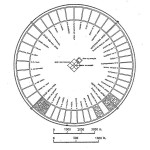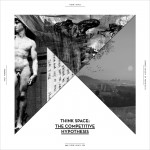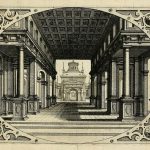German-born artist Dieter Roth (1930-1998) moved to Switzerland in 1943 at the age of 13, seeking asylum during World War II. As he began to work as an artist, he soon became interested in Concrete Art and poetry. His works required a rigorous practice and focused on the production of a systematic imagery coming from meticulous processes. For “German Cities”, he collected black-and-white postcards of landmarks of cities in Germany. The mundane views were then reproduced and ordered in a five by five grid. Each image was covered with a layer of slightly transparent solid color, except for the outline of a single monument that appears superimposed to the different views. Only once in each photo the monument matches the background. Roth experimented with prints throughout his whole artistic career, superposing photos, cutting out parts, eliminating backgrounds and altering colors.
(Confront with Marina Abramovic’s Freeing the Horizon, Sol Lewitt’s Early Map Works, Robert Grosvenor’s Removal of Manhattan Island)
All the images © The estate of Dieter Roth
Via: MoMA, Tate and Zucker Art Books.
Further Reading: Roth time. A Dieter Roth Retrospective. By Dirk Dobke, Dieter Roth, Theodora Vischer, Bernadette Walter. Lars Müller Publishers






Leave a Reply